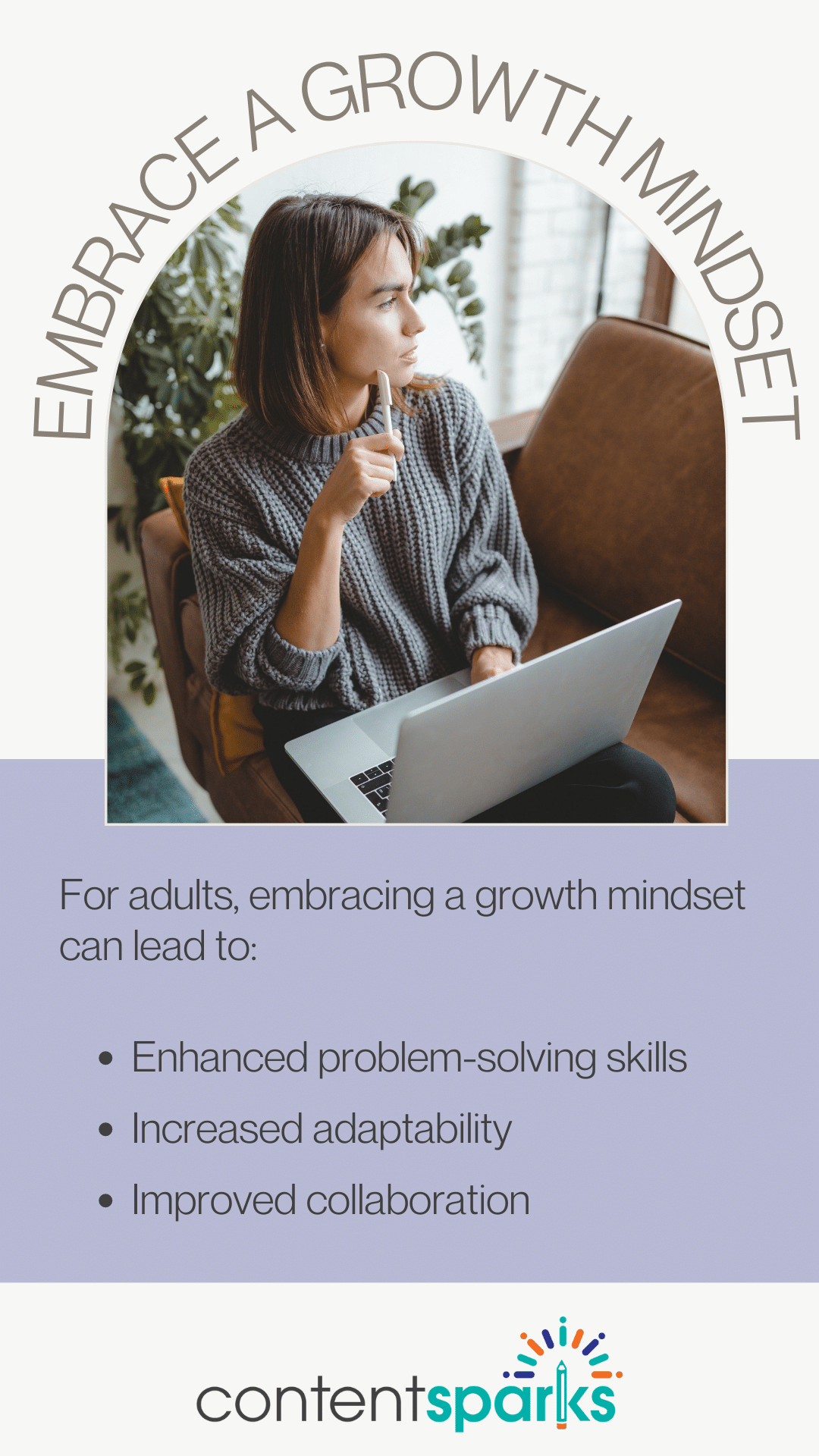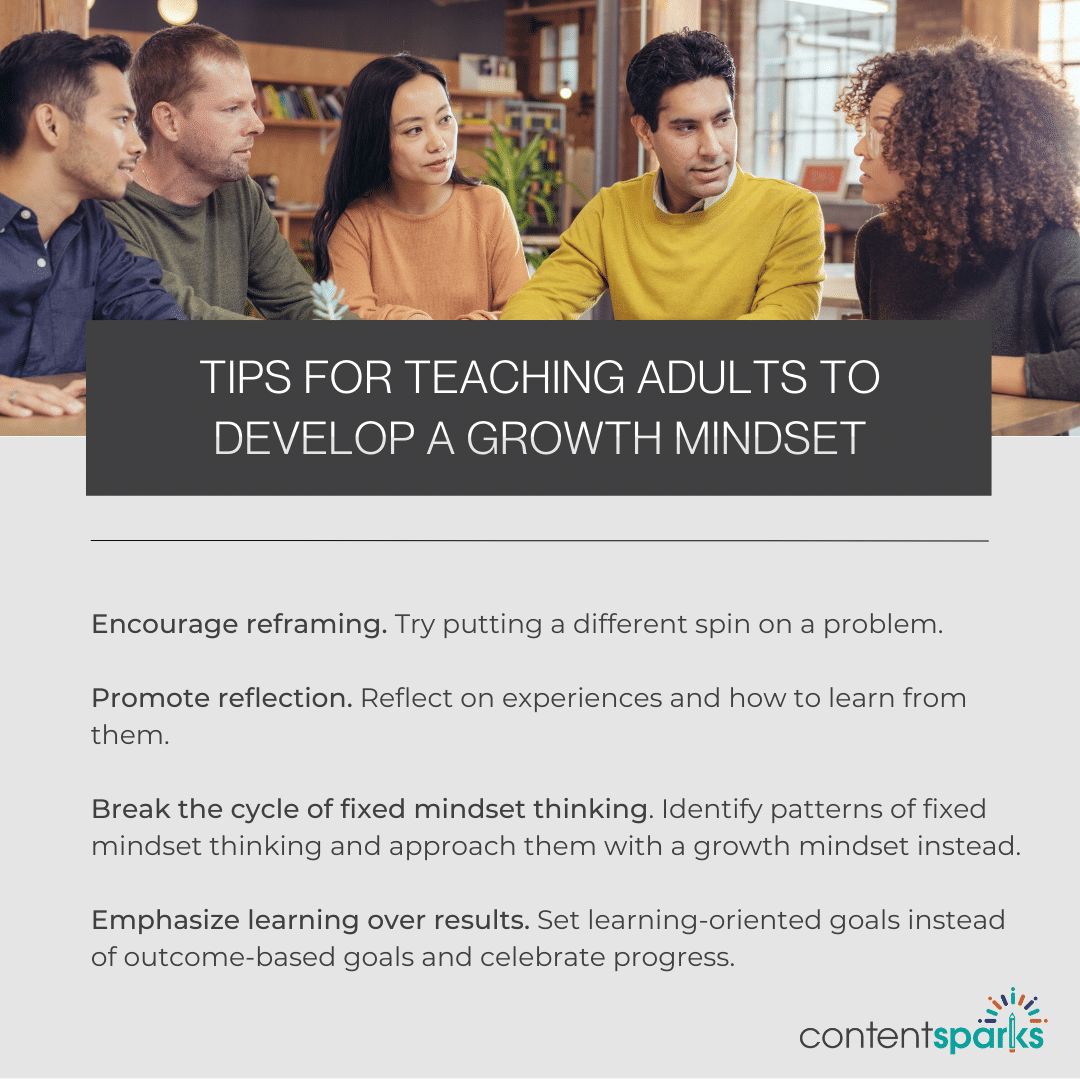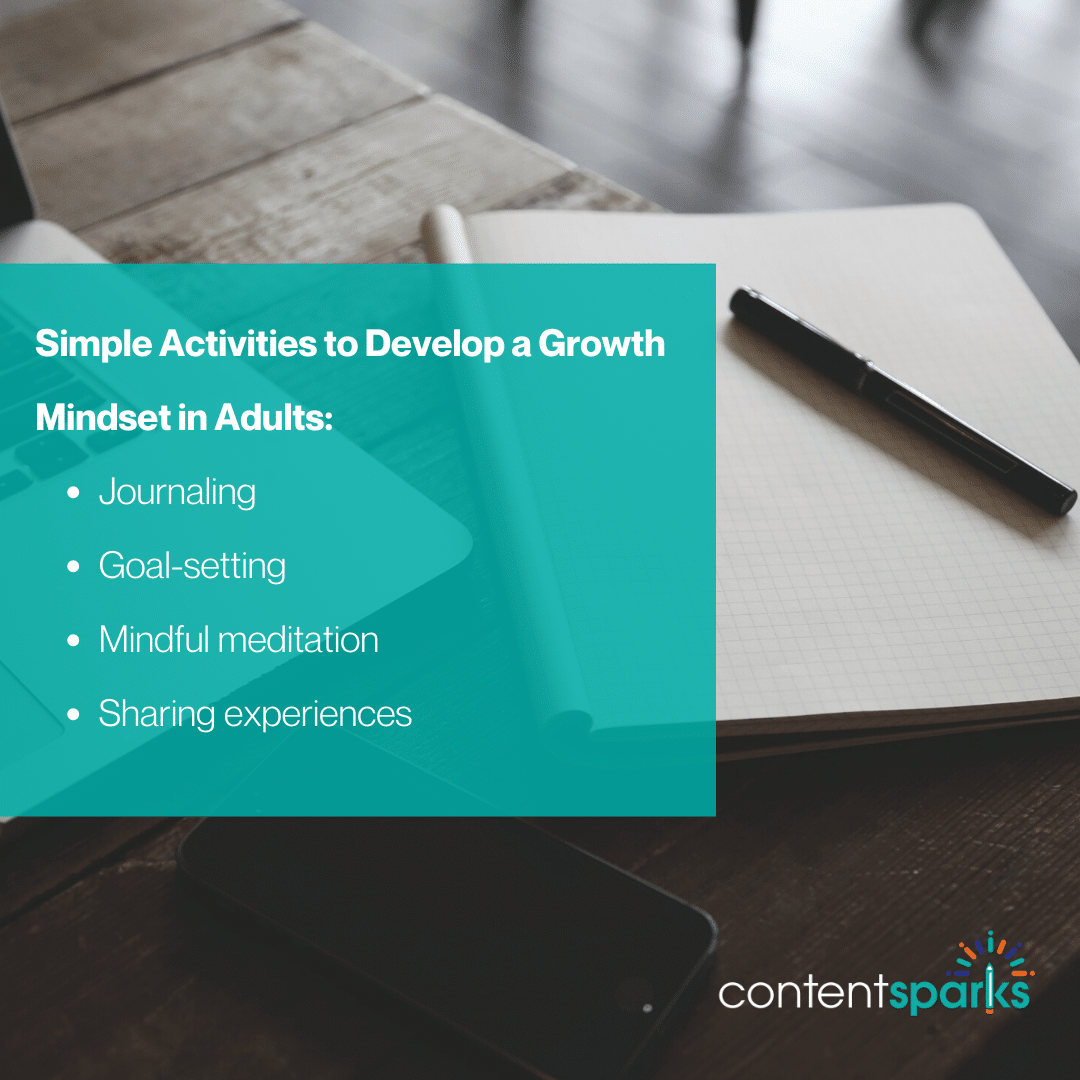Subtotal: $147.00
How to Teach Growth Mindset to Adults: Unlock Your Clients’ Potential for Success
0 comments
0 comments
As a business coach or consultant, knowing how to teach growth mindset to adults is critical for helping your clients succeed. The way your clients think about the world in general will impact all your work with them. Some clients will embrace new ideas and challenges while others resist all your suggestions, leaving you frustrated and wondering what you're doing wrong.
But when you take the time to work with your clients on moving from a fixed to a growth mindset, you'll see all your efforts pay off. Your coaching will open up a world of possibilities and potential for your clients to achieve their goals, which is why you got into coaching in the first place. As they see their success, your clients will be eager to continue working with you. And that's when your coaching business will really take off and become the fulfilling career you dreamed of!

A growth mindset, as defined by psychologist Carol Dweck, is the belief that one's abilities and intelligence can be developed through dedication, hard work, and the right strategies.
This mindset contrasts with a fixed mindset, in which an individual believes their abilities are static and unchangeable.
For adults, embracing a growth mindset can lead to:
Enhanced problem-solving skills:
A growth mindset encourages individuals to view challenges as opportunities to learn, grow, and develop new strategies, leading to more effective problem-solving and decision-making. For example, when faced with a decline in sales, a small business owner with a growth mindset would analyze the situation, learn from it, and develop innovative ways to boost sales.
Increased adaptability:
With a growth mindset, entrepreneurs can better cope with changes in their industries, using setbacks as fuel for growth rather than reasons to quit. For instance, if there is a sudden change in market demand, they can pivot their business model to adapt and thrive in the new environment.
Improved collaboration:
A growth mindset promotes a supportive, learning-focused culture in which team members feel comfortable sharing ideas and learning from one another, leading to increased innovation and success. In a growth-minded workplace, employees might be more likely to share their ideas during brainstorming sessions, leading to the development of new products or services.

Teaching mindset isn't easy. But the brain is wired to be flexible and develop new pathways in response to different stimuli (otherwise known as neuroplasticity), so you can be confident that your students CAN shift their mindset.
However, your students will often unconsciously hide their patterns of thinking, even from themselves. This is because they're stuck in a fixed mindset. They don't want to feel ashamed or depressed about decisions they've made in the past. And telling them to stop being a victim, or to take responsibility won't change this.
Here are a few mindset teaching tips you can implement in any coaching or consulting work you do with clients, including when you deliver any course:

Growth Mindset Guide for Coaching Success - Cheat Sheet
Download the Cheat Sheet for essential steps, strategies, and exercises to help your clients embrace growth and unlock their full potential.
Reframing happens when you put a different spin on something that's weighing on your mind. Imagine for a moment that you've failed your driving test. You might first think of it as the end of the world, and of course your freedom. To reframe, think of it as a small roadblock and that a few more lessons will ensure you're safer on the road. Passing the test, in your new frame of mind, isn't a lucky break or a fluke, but a hard won right .
When teaching an adult how to reframe as part of a growth mindset, be sure to use examples they can relate to. One example for entrepreneurs could be failing at a new business venture. For those students, encourage them to view it as just one more inevitable learning experience that will contribute to their future success.
A small business owner might think, "I can't compete with the big companies in my industry." Guide them to reframe this thought as, "I can offer unique and personalized solutions that big companies can't, and that's my competitive advantage."
Reflection is an important activity that's often missed. When you reflect upon something with a growth mindset, you find the hidden opportunities. Encourage students to regularly reflect on their experiences and consider how they can learn from them to grow personally and professionally.
For example, an entrepreneur may have launched a marketing campaign that didn't generate the expected results. You can encourage reflection on this experience by asking questions like, "What can I learn from this campaign? How can I use this knowledge to improve future marketing efforts?"
Have you ever had a client or student who had an excuse for not implementing any of your suggestions? They claim it won't work for one reason or another, but the root of the problem is their fear of failure or reluctance to step out of their comfort zone. They don't think they can ever compete with others in their field, or they may have failed in the past and can't see the potential for turning that around.
Help students identify patterns of fixed mindset thinking, such as a consistent reluctance to take on challenges. Teach them to replace these patterns with growth mindset thinking, focusing on the endless possibilities they'll have when they try something new.
For example, a small business owner might believe that their limited resources prevent them from innovating. Help them identify this fixed mindset and replace it with a growth mindset thought like, "Limited resources can inspire creativity and force me to think outside the box."
One of the most effective ways to help your clients develop a growth mindset is to change the way they think about learning. When you focus on what's learned rather than output or ROI, your student starts to feel empowered. That's one small change. Of course, you don't ignore the results, but the emphasis shifts from what you get to what you learn. It's a subtle yet powerful action.
For example, an entrepreneur may feel discouraged by a slow start to their new venture. Instead of focusing on the lack of immediate results, shift the conversation to the learning process: "What valuable lessons have you gained during this initial phase, and how can they guide your next steps?"

Aside from the tips for teaching growth mindset, there are some simple exercises you can have your adult learners do on a regular basis. These are activities that can easily be done daily or as part of ongoing coaching or group programs.
Encourage students to keep a daily journal to track their growth, reflect on their experiences, and identify areas for improvement.
For example, a business owner can journal about their decision-making process and what they learned from each choice, helping them refine their strategies over time.
Help students set realistic, achievable goals and develop a plan to work towards them, emphasizing the importance of learning throughout the process.
For example, an entrepreneur can set specific goals for expanding their network and acquiring new clients, focusing on the skills and knowledge they gain along the way.
Teach students to practice mindfulness, focusing on the present moment and cultivating self-awareness and self-compassion.
For example, a busy professional can dedicate a few minutes each day to mindfulness meditation, helping them become more aware of their thoughts and emotions, and fostering a growth mindset.
Create a supportive environment, such as a private course community, where students can share their successes and failures, discussing what they've learned and how they can grow from these experiences.
For example, if you're delivering a group coaching program or online course, you could create a Facebook Group where participants can discuss challenges they're facing during their journey towards a growth mindset. If it's a live program, you can create a cohort group for each course you deliver, so that everyone is at the same point in the course.
The way you help your students achieve any change is by taking small, but powerful actions.
You'll see this in action on all of our white label course pages. You'll notice we focus heavily on the modules, and what you learn from each section. We don't avoid the expected results, and all of our course content contains learning objectives so your students' expectations are managed properly. Combined with the mindset shift around learning, you'll find our courses easier to teach and your students will find them easy to get results from!

Growth Mindset Guide for Coaching Success - Cheat Sheet
Download the Cheat Sheet for essential steps, strategies, and exercises to help your clients embrace growth and unlock their full potential.
This is an important part of a growth mindset. You cannot avoid either making mistakes or not talking about the ones you've made. This keeps you out of the growth mindset zone and stuck in the fixed mindset realm. Sharing your mistakes after you've reflected and reframed them builds an amazing connection with your audience. They can relate to you more and appreciate your honesty, which increases their trust.
When you teach mindset to your students, you'll see the epiphanies on their faces! One small change to their mindset and they can see all the potential that eluded them in the past!
Having read this far, I'm sure you're thinking about what you can do to create a mindset course to teach your adult students and clients.
Look no further. We have a white label course just for you!
But, before I show you how you can quickly teach growth mindset, you need some mindset shifts of your own around white label content.
Click the button below to request your Growth Mindset Guide for Coaching Success and help your clients embrace growth and unlock their full potential.
Mindset changes happen easily when you teach it the right way. We've made setting up your own courses easy by creating all the content for you in a strategically crafted learning experience.
Take a look, see how you can boost your own mindset, then get ready to transform the lives of your students!

Tags